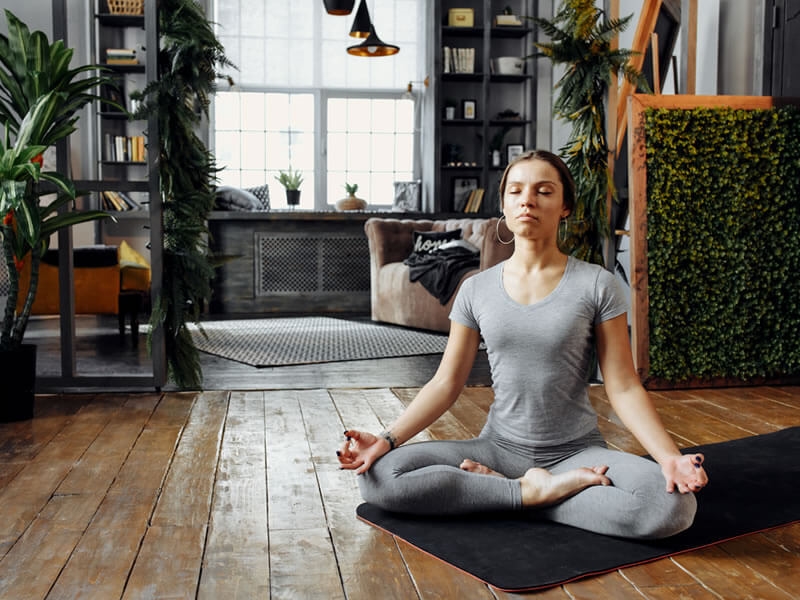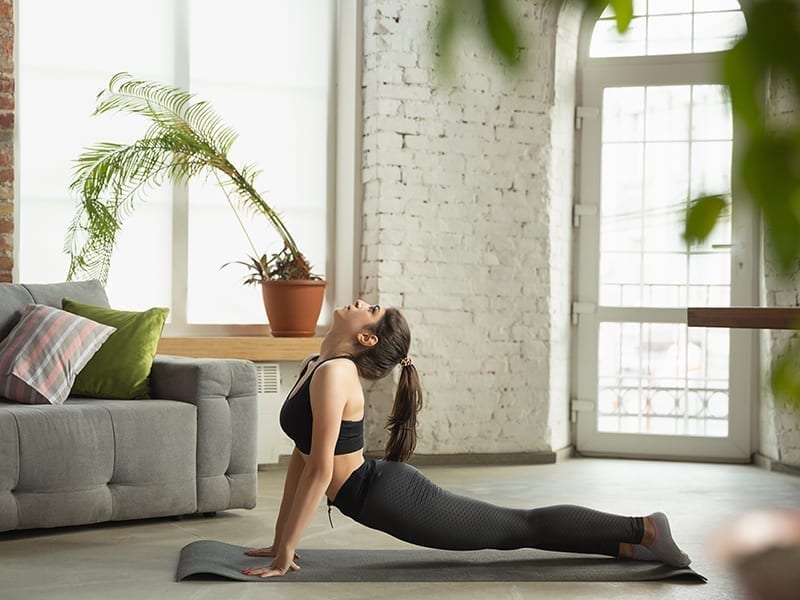Discover the transformative power of yoga for women‘s health. From enhancing flexibility to managing stress, explore how yoga promotes physical, mental, and emotional well-being. Learn about prenatal yoga, empowerment, mindfulness, and more. Embrace balance and wellness through yoga today.
Yoga is a practice that has transcended centuries, originating in ancient India and finding its way into the modern lives of people all around the world. Its popularity has surged not only due to its physical benefits but also because of the profound impact it has on mental and emotional well-being. When it comes to women’s health, yoga offers a comprehensive and holistic approach that addresses their unique physiological and emotional needs. In this article, we will delve into the myriad ways in which yoga can be a transformative practice for women, helping them achieve balance and wellness in every aspect of their lives.

Physical Benefits of Yoga
Enhancing Flexibility and Strength
One of the fundamental pillars of yoga is its focus on enhancing flexibility and strength. Women, in particular, tend to have greater flexibility than men, and yoga provides the perfect avenue to harness and improve this natural advantage. Through a combination of asanas (postures) that involve stretching and lengthening muscles, tendons, and ligaments, women can achieve and maintain a body that moves with ease and grace. Moreover, these postures also contribute to strengthening muscles, which is essential for overall joint and bone health.
Promoting Hormonal Balance
Women’s bodies undergo various hormonal fluctuations throughout their lives – from puberty to pregnancy and menopause. Yoga has been shown to have a positive impact on hormonal balance by regulating the endocrine system. Certain poses, such as backbends and inversions, stimulate specific glands responsible for hormone production, aiding in maintaining equilibrium. This hormonal harmony not only supports physical health but also has a ripple effect on emotional well-being.
Managing Menstrual Discomfort
Menstrual discomfort is an experience shared by women worldwide. The discomfort and pain associated with menstruation can be alleviated through yoga. Gentle poses that focus on the pelvic area and lower back can help relax tense muscles and alleviate cramps. Additionally, relaxation techniques practiced in yoga can contribute to reducing stress, which often exacerbates menstrual discomfort.
Emotional Well-being and Yoga
Stress Reduction and Relaxation
In the fast-paced modern world, stress has become a ubiquitous presence. Women often juggle multiple roles and responsibilities, leading to elevated stress levels. Yoga offers an effective antidote by encouraging relaxation and stress reduction. Deep breathing exercises, meditation, and mindfulness practiced in yoga help activate the body’s relaxation response, mitigating the harmful effects of chronic stress.
Boosting Confidence and Self-Esteem
Yoga is not only a physical practice; it’s an inward journey of self-discovery and self-acceptance. Women can benefit greatly from the increased self-awareness and self-esteem that yoga fosters. As they learn to move and hold poses with strength and poise, it translates into a sense of accomplishment and empowerment that extends beyond the yoga mat.
Yoga Practices During Pregnancy
Safe and Gentle Prenatal Yoga
Pregnancy is a transformative phase in a woman’s life, and practicing yoga during pregnancy can offer a multitude of benefits. Prenatal yoga focuses on poses that are safe for both the mother and the developing baby. These poses promote flexibility, alleviate common pregnancy discomforts, and prepare the body for childbirth.
Preparing for Childbirth through Yoga
Childbirth requires immense physical and mental strength. Yoga equips expectant mothers with the tools to navigate this journey with more ease. Breathing techniques and pelvic floor exercises practiced in yoga can enhance both the physical and mental endurance required during labor and delivery.
Empowerment Through Yoga
Fostering Body Positivity
Yoga encourages a positive relationship with one’s body, irrespective of societal standards. Women often face body image issues, and yoga provides a space to celebrate the body’s capabilities rather than its appearance. This shift in perspective fosters body positivity and self-love.
Cultivating Inner Strength
Life’s challenges can sometimes leave women feeling emotionally drained. Yoga teaches resilience and the importance of cultivating inner strength. The process of moving through poses that initially seem challenging mirrors the journey of overcoming life’s obstacles, fostering a sense of emotional fortitude.
Yoga for Age-Related Wellness
Maintaining Bone Health
As women age, the risk of osteoporosis increases. Yoga, with its weight-bearing poses, helps maintain bone density and strengthens muscles, reducing the risk of fractures.
Enhancing Joint Mobility
Yoga promotes joint mobility through gentle stretches and movements. This is especially crucial for women as they age, as joint stiffness can impede daily activities.
Mindfulness and Meditation
Mind-Body Connection
Yoga places significant emphasis on the mind-body connection. Women can benefit from this aspect by cultivating awareness of their bodies’ needs and cues.
Cultivating Mindfulness
Mindfulness, a cornerstone of yoga, equips women with the ability to be present in the moment. This practice enhances mental clarity, reduces anxiety, and promotes emotional balance.
Choosing the Right Yoga Style
Hatha, Vinyasa, and Beyond
The world of yoga offers a diverse range of styles. Hatha yoga focuses on foundational poses and is ideal for beginners. Vinyasa, on the other hand, incorporates flowing movements and is suitable for those seeking a more dynamic practice. Women can choose a style that aligns with their goals and preferences.
Adapting to Personal Preferences
Every woman’s yoga journey is unique. Some may prefer a vigorous practice, while others may gravitate towards gentle and restorative sessions. Yoga is adaptable, allowing women to tailor their practice to their individual needs.
Starting Your Yoga Journey
Finding a Skilled Instructor
While yoga can be practiced independently, having guidance from a skilled instructor is invaluable. Women should seek instructors who create a safe and inclusive environment, ensuring proper alignment and avoiding injuries.
Creating a Consistent Practice
Consistency is key to reaping the benefits of yoga. Whether it’s dedicating a specific time each day or attending regular classes, establishing a routine ensures that the practice becomes an integral part of a woman’s life.
Yoga Accessories and Props
Enhancing Comfort and Alignment
Yoga accessories such as blocks, straps, and bolsters can greatly enhance the practice. These props provide support, improve alignment, and make poses accessible to women of all fitness levels.
Choosing the Right Mat and Props
A high-quality yoga mat that offers sufficient grip and cushioning is essential. Additionally, women can explore the use of props to deepen their practice and make it more enjoyable.
Breathing Techniques in Yoga
Pranayama for Vitality
Pranayama, or breath control, is a vital aspect of yoga. Women can benefit from incorporating pranayama techniques into their practice to boost energy levels and enhance lung capacity.
Calming Breath Exercises
Yoga offers a range of breath exercises that promote relaxation and reduce anxiety. Learning these techniques equips women with tools to manage stress in their daily lives.

Balancing Work-Life with Yoga
Quick Desk Stretches
Women often find themselves juggling work, home, and personal commitments. Yoga provides quick and effective stretches that can be done at a desk to alleviate muscle tension and re-energize the body.
Managing Stress at Work
Stress at the workplace can take a toll on women’s well-being. By integrating short mindfulness practices and breathing exercises into the workday, women can manage stress and enhance focus.
Maintaining Yoga Discipline
Setting Realistic Goals
Yoga is a journey, not a destination. Women should set realistic goals and avoid comparing their progress to others. Celebrating small victories along the way fosters a positive outlook.
Overcoming Procrastination
Life can get busy, and it’s easy to put off yoga practice. Women can overcome procrastination by dedicating a specific time, creating a designated practice space, and reminding themselves of the benefits they reap.
Yoga and Holistic Nutrition
Supporting Digestive Health
Yoga and nutrition go hand in hand. Certain yoga poses, such as twists, stimulate the digestive system and support healthy gut function.
Mindful Eating and Yoga
Practicing mindfulness on the mat can extend to the dining table. Women can cultivate mindful eating habits, savoring each bite and paying attention to hunger and fullness cues.
Conclusion: Embrace Yoga for a Balanced Life
Yoga is a holistic practice that encompasses physical, mental, and emotional well-being. For women, it’s a tool that empowers them to navigate life’s challenges with resilience, grace, and strength. By embracing yoga, women can embark on a transformative journey that leads to balance, wellness, and a profound connection with themselves.
Frequently Asked Questions
- Is yoga suitable for beginners?
- Absolutely! Many yoga classes cater to beginners, providing modifications and guidance to help ease into the practice.
- Can yoga help with weight loss?
- While yoga may not directly result in significant weight loss, it can contribute to overall wellness, which includes weight management.
- Are there specific yoga poses for pregnancy?
- Yes, there are prenatal yoga poses that are safe and beneficial during pregnancy. It’s important to practice under the guidance of a qualified instructor.
- Can men also practice yoga for women?
- Yoga is not gender-specific. Men can certainly benefit from the physical and mental aspects of yoga just as women do.
- How often should I practice yoga to see results?
- Consistency is key. Aim for a regular practice, whether it’s a few times a week or daily, to experience the full range of benefits.


